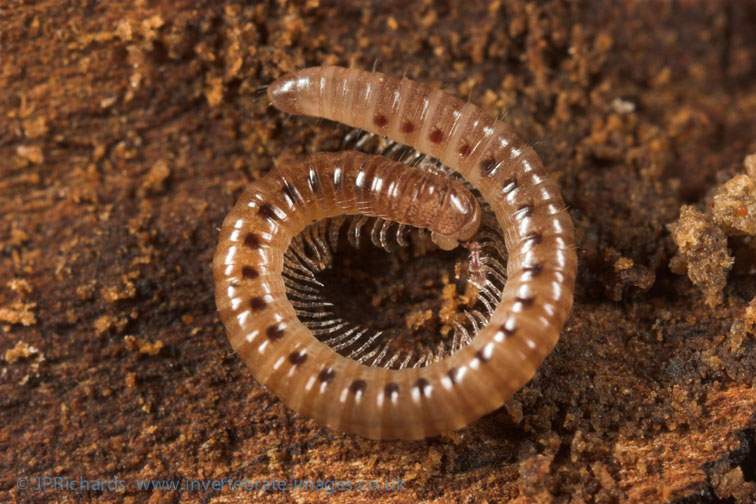Proteroiulus fuscus (Am Stein, 1857)
Status:
GB IUCN status: Least Concern
ID Difficulty
Identification
Blaniulid millipedes are conspicuously long and slender. This species is usually more than 0.5 mm in width, with eyes comprising a row of ocelli with a few displaced above (an equilateral triangular patch in its frequent associate Nemasoma varicorne). It may also be confused with the other eyed, but uncommon, Blanuilids Nopoiulus kochii and Choneiulus palmatus.
Distribution
This species is very widespread and common in Britain and Ireland.
It is essentially a northern European species and is restricted to mountains in the south of its range. It appears to be absent from much of France, Iberia, the Balkans and the Mediterranean region. However, it has been introduced to North America, South Africa and a number of islands in the Atlantic (Kime, 1999).
Habitat
Analysis of the habitat data suggests a very strong association with woodland and strong negative relationships with synanthropic sites including churchyards, gardens and waste ground. Strong negative relationships with arable land, grassland and sand dunes are also evident. These findings reflect the fact that, although not restricted to woodland, P. fuscus is usually found under bark on both living and dead coniferous and deciduous trees. It can also occur in soil and leaf litter, either in well established populations (Blower, 1985) or during dispersal (Kime, 2004). Analysis of the recording scheme habitat data suggests a strong association with non-calcareous soils in general and peaty soils in particular.
Phenology
As with Nemasoma varicorne, this is a parthenogenetic species and it is rare to find males. Where males do occur they appear to be non-functional (Enghoff, 1978). Females take three years to reach maturity in natural conditions (Brookes, 1974) and adults may be found at any time of the year. In laboratory conditions a male has survived for a further six years on reaching maturity (Rantala, 1974).
This species account is based on Lee (2006).
Links
MilliBase - Global catalogue of Millipedes: https://millibase.org/aphia.php?p=taxdetails&id=945136









